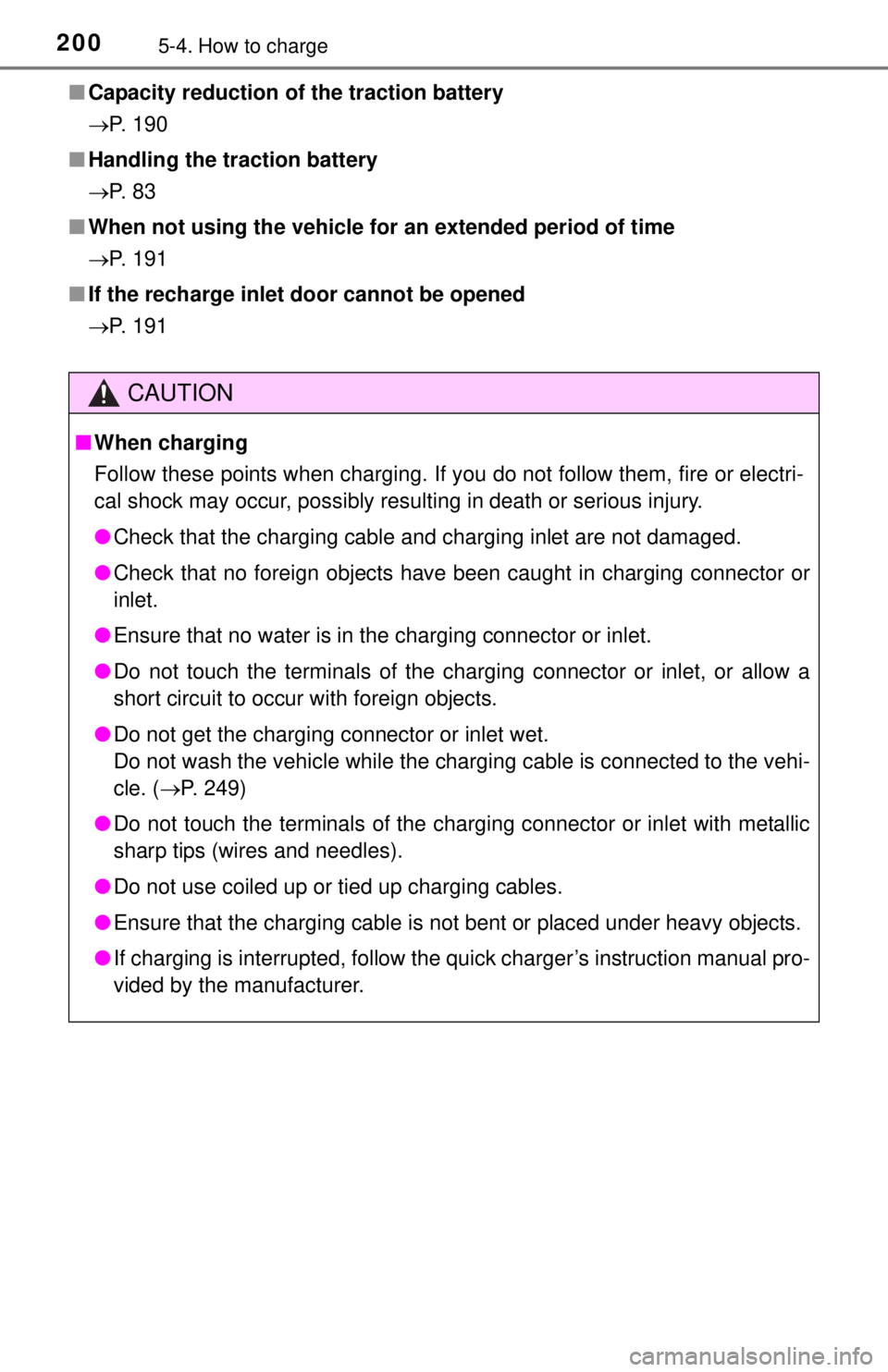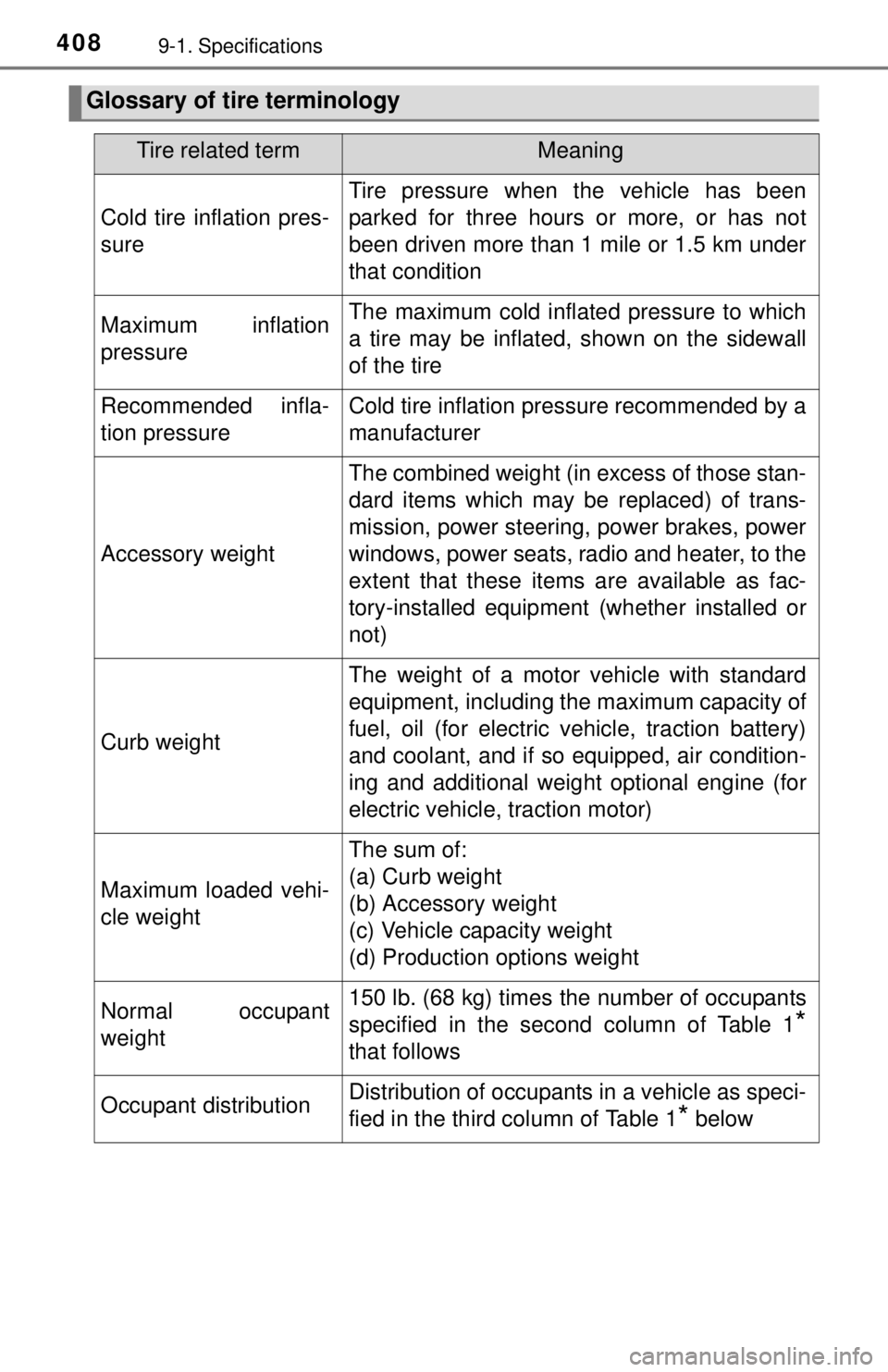oil capacity TOYOTA iQ EV 2013 Owners Manual (in English)
[x] Cancel search | Manufacturer: TOYOTA, Model Year: 2013, Model line: iQ EV, Model: TOYOTA iQ EV 2013Pages: 444, PDF Size: 7.34 MB
Page 200 of 444

2005-4. How to charge
■Capacity reduction of the traction battery
P. 190
■ Handling the traction battery
P. 8 3
■ When not using the vehicle for an extended period of time
P. 191
■ If the recharge inle t door cannot be opened
P. 191
CAUTION
■ When charging
Follow these points when charging. If you do not follow them, fire or electri-
cal shock may occur, possibly resulting in death or serious injury.
● Check that the charging cable and charging inlet are not damaged.
● Check that no foreign objects have been caught in charging connector or
inlet.
● Ensure that no water is in the charging connector or inlet.
● Do not touch the terminals of the charging connector or inlet, or allow a
short circuit to occur with foreign objects.
● Do not get the charging connector or inlet wet.
Do not wash the vehicle while the charging cable is connected to the vehi-
cle. ( P. 249)
● Do not touch the terminals of the charging connector or inlet with metallic
sharp tips (wires and needles).
● Do not use coiled up or tied up charging cables.
● Ensure that the charging cable is not bent or placed under heavy objects.
● If charging is interrupted, follow the quick charger’s instruction manual pro-
vided by the manufacturer.
Page 408 of 444

4089-1. Specifications
Glossary of tire terminology
Tire related termMeaning
Cold tire inflation pres-
sure
Tire pressure when the vehicle has been
parked for three hours or more, or has not
been driven more than 1 mile or 1.5 km under
that condition
Maximum inflation
pressureThe maximum cold inflated pressure to which
a tire may be inflated, shown on the sidewall
of the tire
Recommended infla-
tion pressureCold tire inflation pressure recommended by a
manufacturer
Accessory weight
The combined weight (in excess of those stan-
dard items which may be replaced) of trans-
mission, power steering, power brakes, power
windows, power seats, radio and heater, to the
extent that these item s are available as fac-
tory-installed equipment (whether installed or
not)
Curb weight
The weight of a motor vehicle with standard
equipment, including the maximum capacity of
fuel, oil (for electric vehicle, traction battery)
and coolant, and if so equipped, air condition-
ing and additional weight optional engine (for
electric vehicle, traction motor)
Maximum loaded vehi-
cle weight
The sum of:
(a) Curb weight
(b) Accessory weight
(c) Vehicle capacity weight
(d) Production options weight
Normal occupant
weight150 lb. (68 kg) times the number of occupants
specified in the second column of Table 1
*
that follows
Occupant distributionDistribution of occupants in a vehicle as speci-
fied in the third column of Table 1
* below